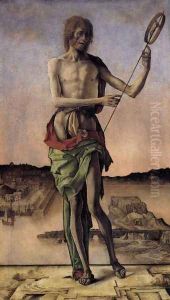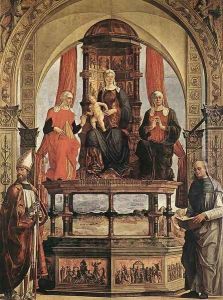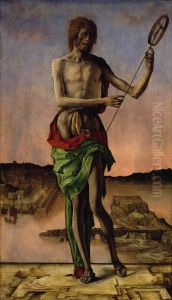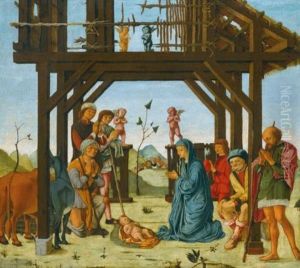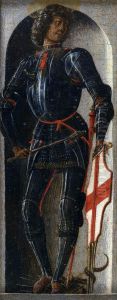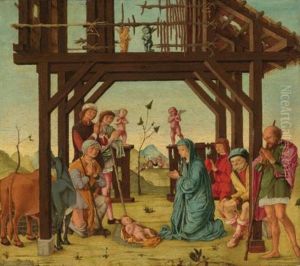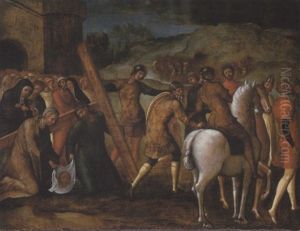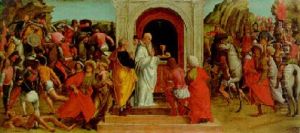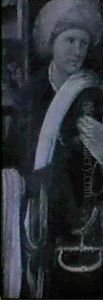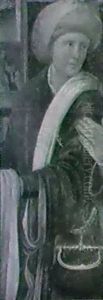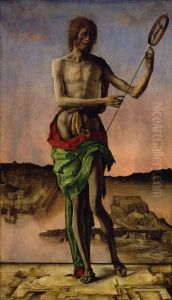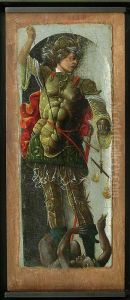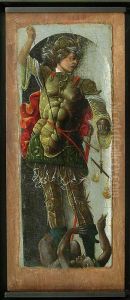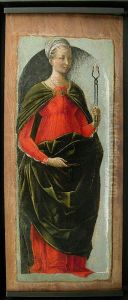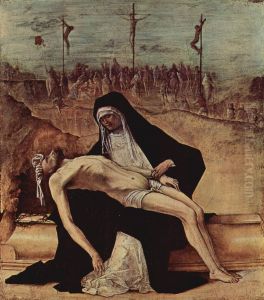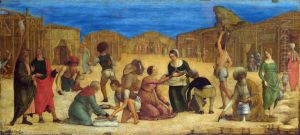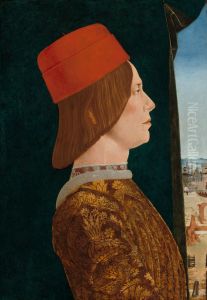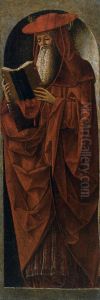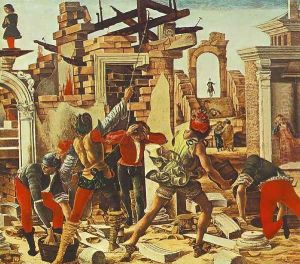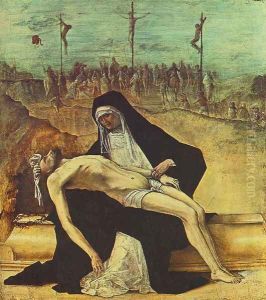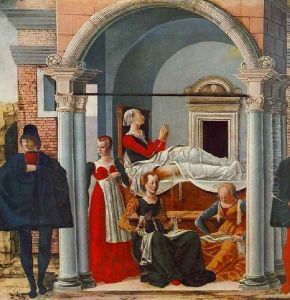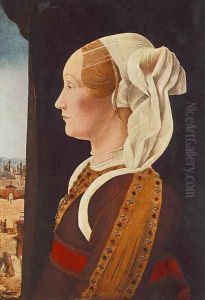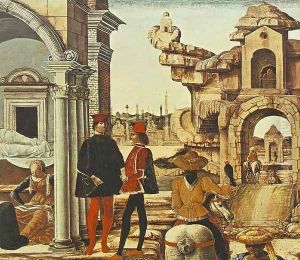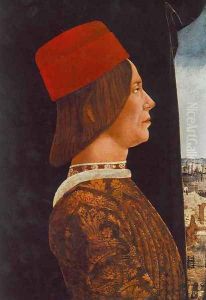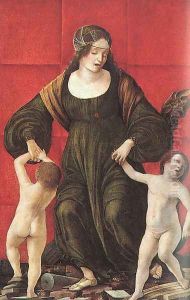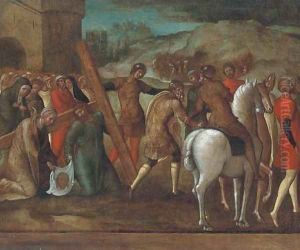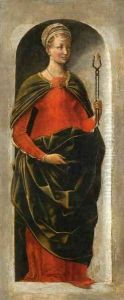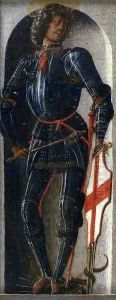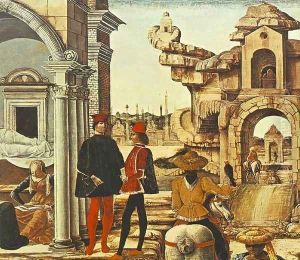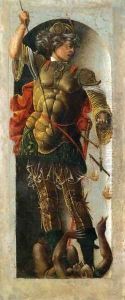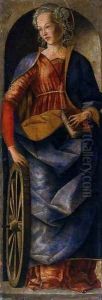Ercole de' Roberti Paintings
Ercole de' Roberti, also known as Ercole Ferrarese or Ercole da Ferrara, was an early Italian Renaissance painter who played a significant role in the School of Ferrara. Born around 1451, his early life is not well-documented, but it is believed he trained with the painter Francesco del Cossa. Roberti's work is characterized by its emotional intensity, attention to detail, and innovative use of perspective and composition.
Roberti spent the majority of his career in Ferrara, a city that was, at the time, a vibrant center for the arts under the patronage of the Este family. He became court painter to the Este dukes, which allowed him to work on a variety of projects including altarpieces, frescoes, and portraits. One of his most significant contributions was his work on the frescoes of the Palazzo Schifanoia, which he undertook alongside Cossa and Cosimo Tura, another prominent Ferrarese painter. These frescoes depicted the months of the year and were celebrated for their allegorical complexity and rich symbolism.
Despite his success, there are relatively few surviving works confidently attributed to Roberti. One of his most notable surviving paintings is the 'Portia and Brutus', which showcases his skill in portraying complex human emotions. Another important work is the 'Grieving Madonna', which exemplifies his dramatic and expressive style.
Ercole de' Roberti's influence was somewhat overshadowed by his contemporaries and by the later High Renaissance artists. However, his contributions to the Ferrarese school and his unique stylistic elements have been reassessed by art historians, and he is now recognized for his role in shaping the course of Renaissance art. Tragically, Roberti's life was cut short when he died in 1496, but his legacy continues to be appreciated by those who study and admire the art of the Italian Renaissance.
